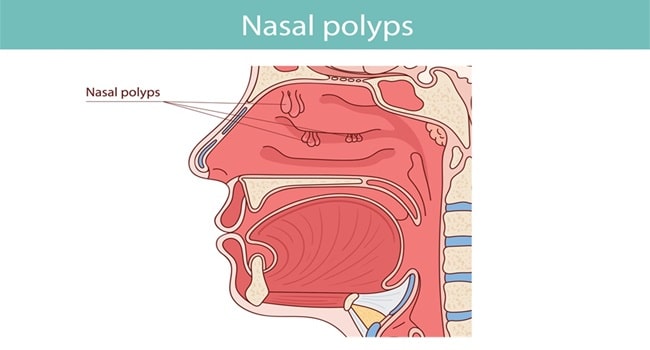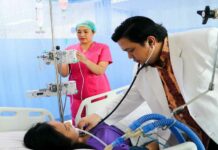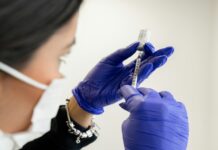Nasal polyps are benign growths on the mucous membrane of the nasal passages or sinus cavities. The bigger the size of the polyp, the higher the risk of experiencing serious health problems. For patients who have severe symptoms, nasal polyps removal may be recommended to restore nasal breathing and improve quality of life.
This article explains the removal process and what patients should expect. Keep reading to learn more
Understanding Nasal Polyps and Their Impact
Nasal polyps frequently lead to airway obstructions or breathing issues. Patients may suspect they have nasal polyps based on a combination of signs and symptoms:
- Persistent nasal congestion: A constant feeling of a blocked or stuffy nose that doesn’t improve with typical cold or allergy treatments.
- Reduced sense of smell: A noticeable decrease in the ability to smell, which may also affect taste.
- Runny nose: Chronic nasal drainage, often with clear or colored mucus.
- Facial pain or pressure: A sense of discomfort, heaviness, or tightness in the face, often concentrated around the sinus areas.
- Postnasal drip: The feeling of mucus accumulating or trickling down the throat from the back of the nose.
- Snoring or sleep disturbances: Breathing difficulties caused by nasal obstruction may lead to snoring or disrupted sleep.
- Recurrent sinus infections: Frequent or chronic sinus infections that don’t respond well to treatment.
- Breathing difficulties: Trouble breathing through the nose, particularly if it worsens over time.
If these symptoms persist for more than 10 days or recur frequently, it’s essential to consult an otolaryngologist or an ENT (ear, nose, and throat) specialist.
The development of nasal polyps is often linked to chronic inflammation caused by conditions like allergic rhinitis, chronic sinusitis, or cystic fibrosis. While conservative treatments can help manage symptoms, some patients may require nasal polyps removal for long-term relief.
When Is Nasal Polyp Surgery Necessary?
When medical treatments like nasal corticosteroid sprays, saline nasal sprays, or oral steroids fail to alleviate symptoms, surgical solutions may be considered. This is especially true for patients with obstructive nasal polyposis or those experiencing a significant loss of smell, recurrent sinus infections, or severe nasal obstruction.
The most common type of surgery for nasal polyps is endoscopic sinus surgery, also known as endoscopic nasal polypectomy. This minimally invasive procedure allows sinus specialists to remove polyps and clear blocked sinus passageways, improving airflow and reducing the risk of future sinus infections.
What to Expect During Nasal Polyp Removal Surgery
Nasal polyp removal surgery is generally an outpatient procedure. Before the surgery, your healthcare provider may recommend avoiding certain medications or strenuous activity in the days leading up to the procedure.
During the surgery, the sinus specialist uses a thin, flexible tube with a camera or endoscope to visualize the nasal cavities and sinus cavities. Specialized tools, such as an electric microdebrider, are used to remove the polyps and clear any blockages. The goal is to achieve complete sinus clearance while minimizing trauma to the nasal lining.
Most patients experience bearable pain during the procedure, and anti-anxiety medication may be offered to help anxious patients feel more comfortable. The surgery typically takes one to two hours, and patients are monitored for complications like excessive bleeding or hypotension during nasal procedures.
Recovery After Nasal Polyp Surgery
In the hours after surgery, patients may experience mild discomfort, nasal pressure, or a dull ache. To manage post-operative pain, you can use over-the-counter pain relievers and topical medications. Meanwhile, nasal congestion and a stuffy nose are common in the days after surgery, but these symptoms usually improve as the nasal passages heal.
Aside from managing pain post-procedure, patients are advised to avoid strenuous activity for at least a week and to follow their healthcare provider’s instructions for proper care. This may include using saline nasal sprays, sinus irrigation kits, or nasal corticosteroid sprays to keep the sinuses clean and reduce the risk of recurrence.
Most patients can return safely and comfortably go back to their daily activities within a few days after sinus surgery. Still, patients must track their healing progress and address any concerns when they go to follow-up appointments with their doctor. In some cases, additional treatments like allergy shots or biologic medications may be recommended to prevent the recurrence of nasal polyps.
Long-Term Results and Considerations
While nasal polyp removal surgery can significantly improve symptoms and quality of life, it’s not a permanent cure for nasal polyps. The condition has a high recurrence rate. Moreover, long-term use of nasal steroid sprays and regular sinus irrigation can help reduce the risk of recurrence.
For patients with severe or recurrent polyps, a sinus specialist may recommend a more complex procedure or additional medical therapy. In some cases, randomized studies and case-control studies have shown promising results with newer treatments like biologic medications, which target the underlying inflammation responsible for polyp formation.
Conclusion
Nasal polyps can significantly impact daily life, which is why some patients may require nasal polyp removal surgery for long-term relief. This surgery is a safe and effective solution for removing polyps and enhancing nasal airflow.

By understanding what to expect before, during, and after surgery, patients can feel more confident in their decision to pursue treatment. Also, with appropriate care and regular follow-up, most patients see a notable enhancement in their symptoms and overall quality of life.
















